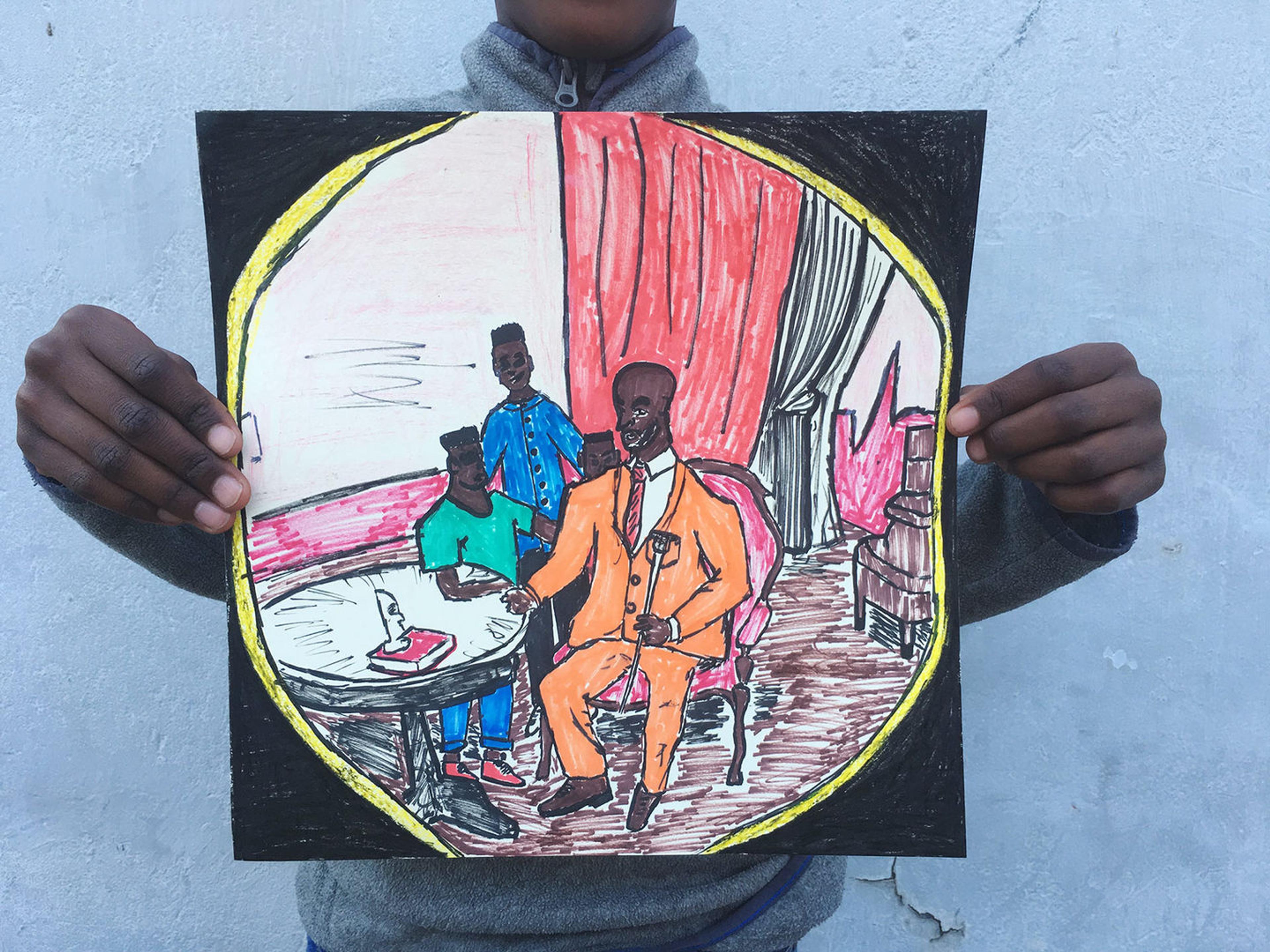
Thabo displays his artwork, which depicts his brothers and father, at Play Africa. All photos by Shiloah Coley
As you walk through an art museum, how many kids and families of color do you see on the walls?
My name is Shiloah Coley and I’m from Chicago. When I was a little girl, I remember going to art museums and galleries with my mom. I always wondered why I didn’t see any black or brown kids who looked like me in the artworks. This sparked my interest in art and art history. Since then, I have always looked for chances to explore how art can build ties among all people.
Too often in the past, museums mostly collected artwork by European and early American white artists that didn’t feature people of color, let alone children, as key figures. By allowing black and brown people to be largely invisible, Western art museums told a limited story about humanity. Instead, traditional art colored their roles with negative prejudices, or false, harmful ideas.
Today, as an artist myself, I create art that tells the stories of women of color like my mom and me. Through making art, I hope to help black and brown kids see themselves reflected more in the art world.
During my second year of college, I had the chance to expand my interests beyond the U.S., my home country. I started to work for a program that built cultural ties between kids at the Madison Children's Museum in Madison, Wisconsin, and kids at Play Africa, a children's museum in Johannesburg, South Africa. During the summer, I traveled to Johannesburg to work at Play Africa. This museum provides a safe place for children and families in Johannesburg to play and create art together.
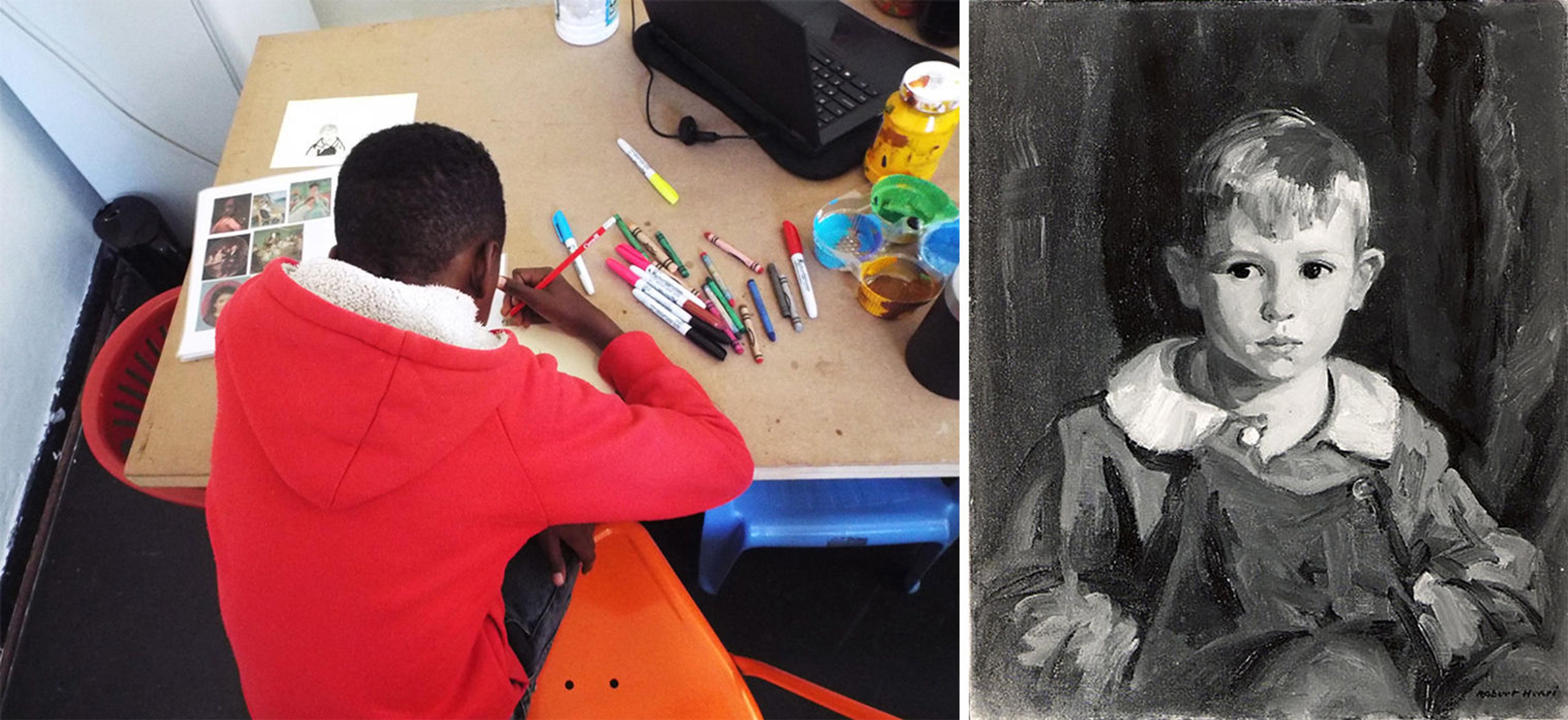
Lehlohonolo (left) creates a portrait of his own brother based off of John, a portrait by Robert Henri (right). More about the artwork: Robert Henri (American, 1865–1929). John, 1908. Oil on canvas, 24 x 20 1/8 in. (61 x 51.1 cm). The Metropolitan Museum of Art, New York, Bequest of Miss Adelaide Milton de Groot (1876–1967), 1967 (67.187.129)
Looking back, we can see a lot of room for the real stories of black and brown kids in the art histories of Europe and America. This ''space'' in history inspired Play Africa to collaborate with #MetKids on a portrait project. For 5 weeks, I led a program for kids to explore The Met’s paintings online and put their own spin on art history. First, children picked images of kids and families from The Met’s painting collection that is online. Then they created their own portrait that changed the original painting to reflect their own lives.
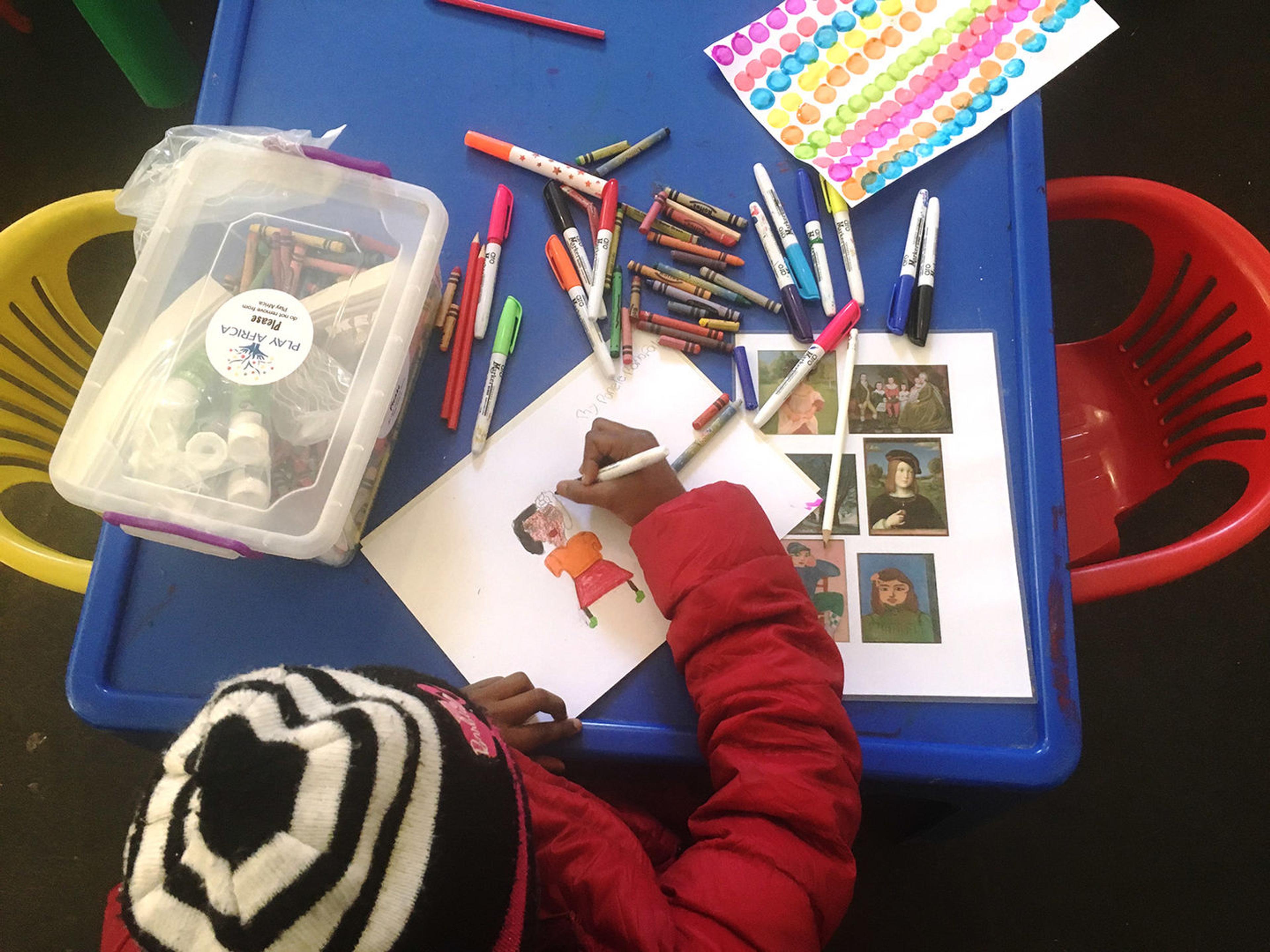
Ponele works on her portrait with her materials spread out on the blue table: crayons, markers, and printouts of paintings from The Met’s website.
At Play Africa we took our inspiration from thirty-nine images of paintings from The Met that showed children and families. We looked at the artworks together and the kids each chose a piece they liked. I wanted the children to feel free to change the original story of the artwork in big ways. I encouraged them to draw themselves, or their own friends and family, into the picture. They could adjust any part of the painting as they saw fit, or they could invent new details they wanted to include.

Michelle (above) sketches an outline for her portrait. She is remixing the painting John and Louisa Stock by Joseph Whiting Stock (below). More about the artwork: Joseph Whiting Stock (American, 1815–1855). John and Louisa Stock, 1845. Oil on canvas, 50 1/4 in. x 40 in. (127.6 x 101.6 cm). The Metropolitan Museum of Art, New York, Gift of Edgar William and Bernice Chrysler Garbisch, 1966 (66.242.19)

Kefilwe (above) hunches over her artwork. She is putting her own spin on Nono Lebasque by Henri Matisse (below). More about the artwork: Henri Matisse (French, 1869–1954). Nono Lebasque, 1908. Oil on canvas, 21 5/8 x 18 1/8 in. (54.9 x 46 cm). The Metropolitan Museum of Art, New York, Bequest of Miss Adelaide Milton de Groot (1876–1967), 1967 (67.187.83)
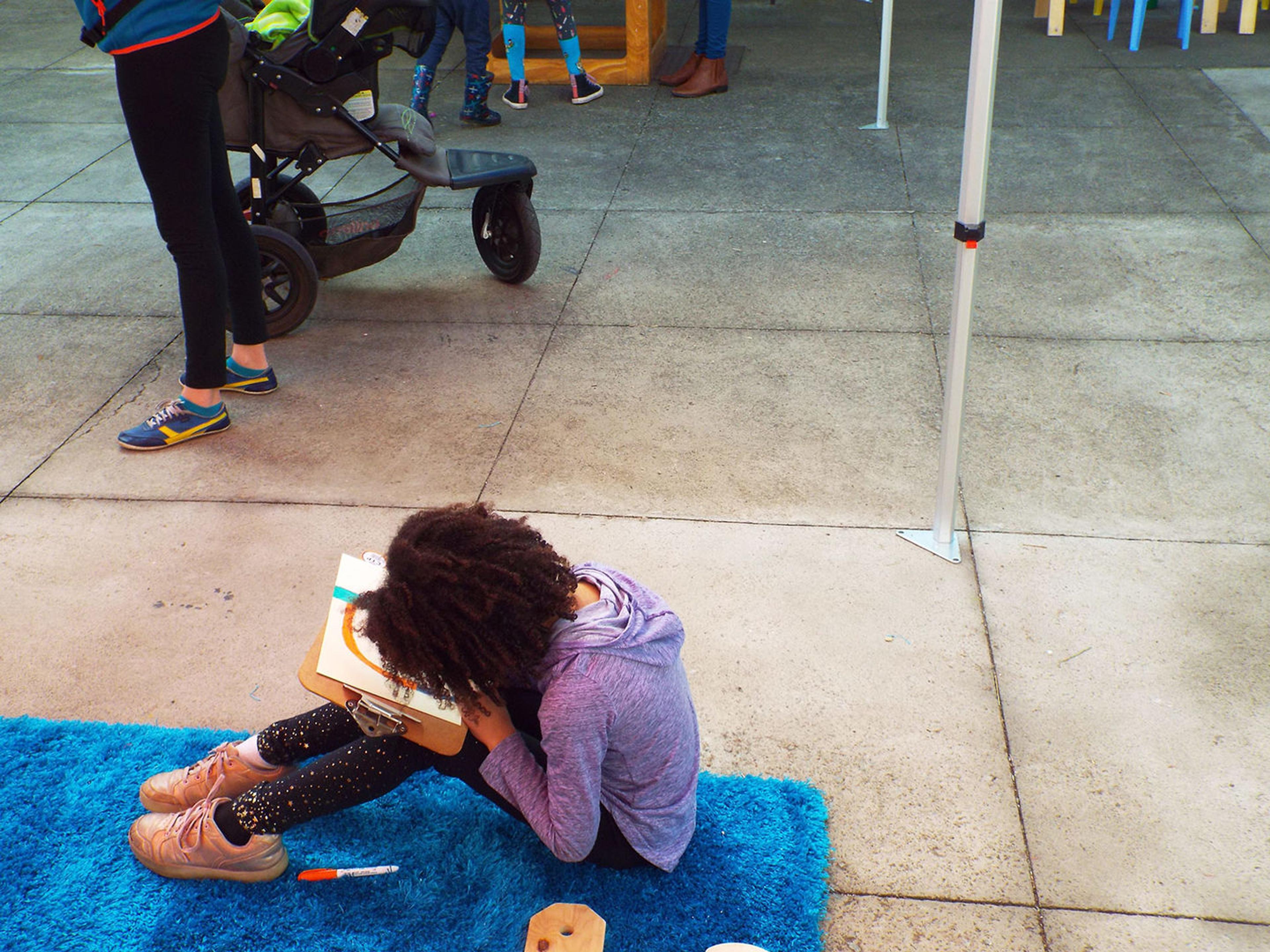
Awra bends over her drawing in the Play Africa space.
A lot of the kids hesitated at first. Sometimes they felt the original artwork was “too good” and worried their drawing skills were not strong enough. But when I encouraged them to re-create it the way they wanted and with their own families, they got more comfortable. After looking around the space at what their friends were making, they grew more confident. The original artwork stirred their imaginations, and soon kids let their own ideas take over. Before I knew it, the kids had been there for a couple hours. We'd all lost of track of time.
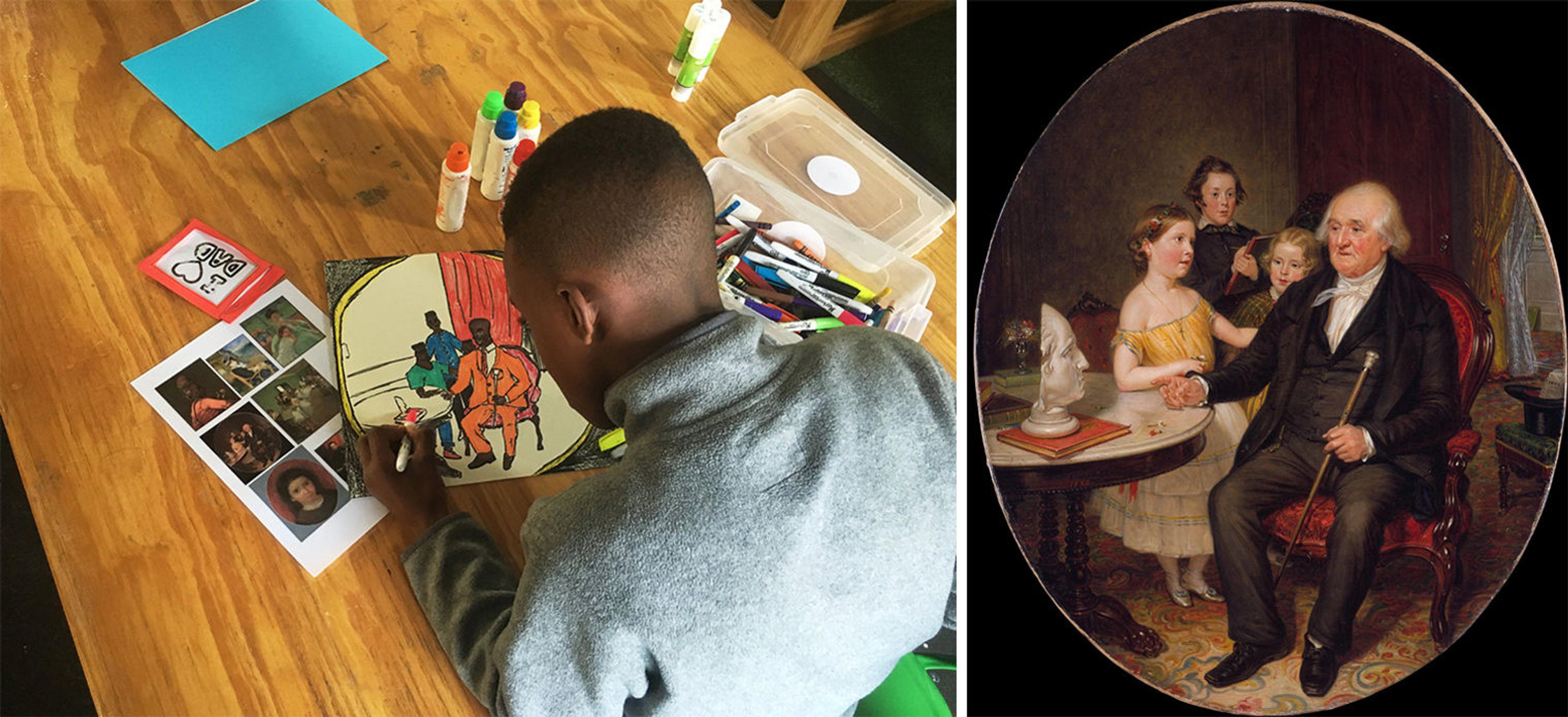
Thabo (left) adds details to his artwork, a portrait of his family. He recreated Great-Grand-Father's Tale of the Revolution—A Portrait of Reverend Zachariah Greene by William Sidney Mount (right). More about the artwork: William Sidney Mount (American, 1807–1868). Great-Grand-Father's Tale of the Revolution—A Portrait of Reverend Zachariah Greene, 1852. Oil on canvas, 24 x 20 in. (61 x 50.8 cm). The Metropolitan Museum of Art, New York, Purchase, Morris K. Jesup and Maria DeWitt Jesup Funds, Gift of George I. Seney and Bequest of Vera Ruth Miller, by exchange; and Gift of Anita Pohndorff Yates, in memory of her father, F. G. Pohndorff, 1984 (1984.192)
''I changed the clothes because we wear more colorful clothes,'' said Thabo, 14.

Ponele holds up the portrait she created of her mom.
''This is my mom!'' Ponele said, showing off her portrait.

Somto (left) shows off her portrait. She was inspired by Portrait of a Little Girl Picking Grapes (right). More about the artwork: Portrait of a Little Girl Picking Grapes, 1840–50. American. Oil on canvas, 35 3/4 x 28 7/8 in. (91 x 73.3 cm). The Metropolitan Museum of Art, New York, Gift of Edgar William and Bernice Chrysler Garbisch, 1973 (1973.323.6)
Can we create an art history that communicates people of color’s different experiences around the world, including from New York to Johannesburg? Through this project, the young people at Play Africa in Johannesburg could almost visit The Met, many thousands of miles away in New York City. By publishing this blog to share their drawings, I hope to bring some of their experiences to The Met, too. In this way, we can better appreciate how black and brown people are central to the history of art. People who struggled against injustice in the past and might have been left "out of the picture" are essential to art of the future. Thanks to this project, my hope is that museums will increasingly treasure and share the stories of all children—regardless of race—around the world.

Gugulethu (left) holds up her finished portrait of her loved ones. She was inspired by Jean Monet (1867–1913) on His Hobby Horse by Claude Monet (right). More about the artwork: Claude Monet (French, 1840–1926). Jean Monet (1867–1913) on His Hobby Horse, 1872. Oil on canvas, 23 7/8 x 29 1/4 in. (60.6 x 74.3 cm). The Metropolitan Museum of Art, New York, Gift of Sara Lee Corporation, 2000 (2000.195)

Michelle (left) presents her finished portrait. She was inspired by John and Louisa Stock by Joseph Whiting Stock (right). More about the artwork: Joseph Whiting Stock (American, 1815–1855). John and Louisa Stock, 1845. Oil on canvas, 50 1/4 in. x 40 in. (127.6 x 101.6 cm). The Metropolitan Museum of Art, New York, Gift of Edgar William and Bernice Chrysler Garbisch, 1966 (66.242.19)

Kefilwe presents her final artwork (left). She was inspired by Daughter of William Page (Possibly Anne Page) by William Page (right). More about the artwork: William Page (American, 1811–1885). Daughter of William Page (Possibly Anne Page), ca. 1837–38. Oil on canvas, Oval: 14 x 12 in. (35.6 x 30.5 cm). The Metropolitan Museum of Art, New York, Bequest of Emma A. Fortuna, 1925 (25.85.2)

Jaylin (left) shows off her finished artwork, titled My Selfie! She was inspired by Boy with Blond Hair (right). More about the artwork: Boy with Blond Hair. American, ca. 1840–50. Oil on canvas, 34 1/2 x 29 1/2 in. (87.6 x 75 cm). The Metropolitan Museum of Art, New York, Gift of Edgar William and Bernice Chrysler Garbisch, 1973 (1973.323.5)
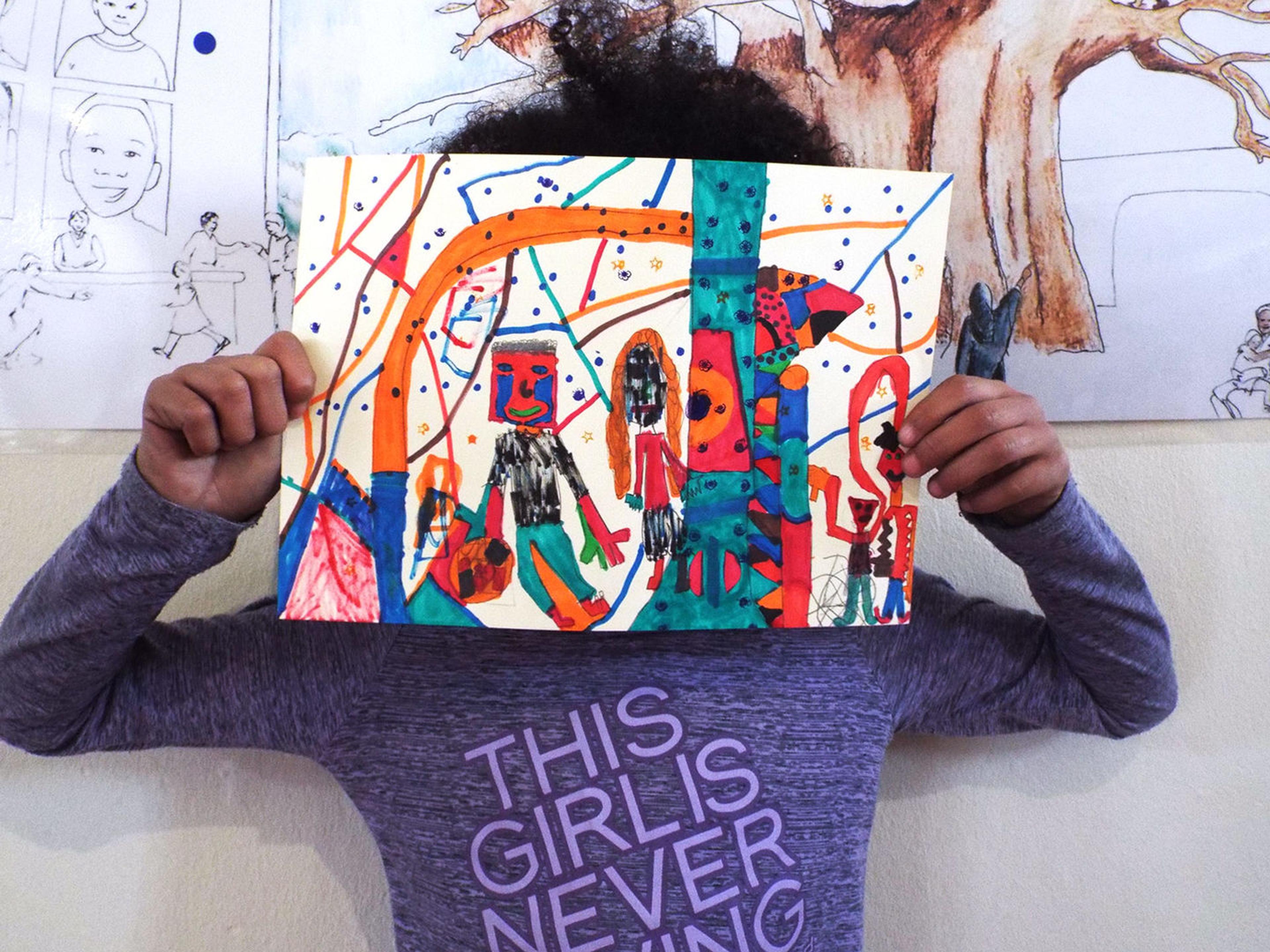
Awra holds up her artwork, which depicts her family. Her inspiration was The Builders by Fernand Léger.
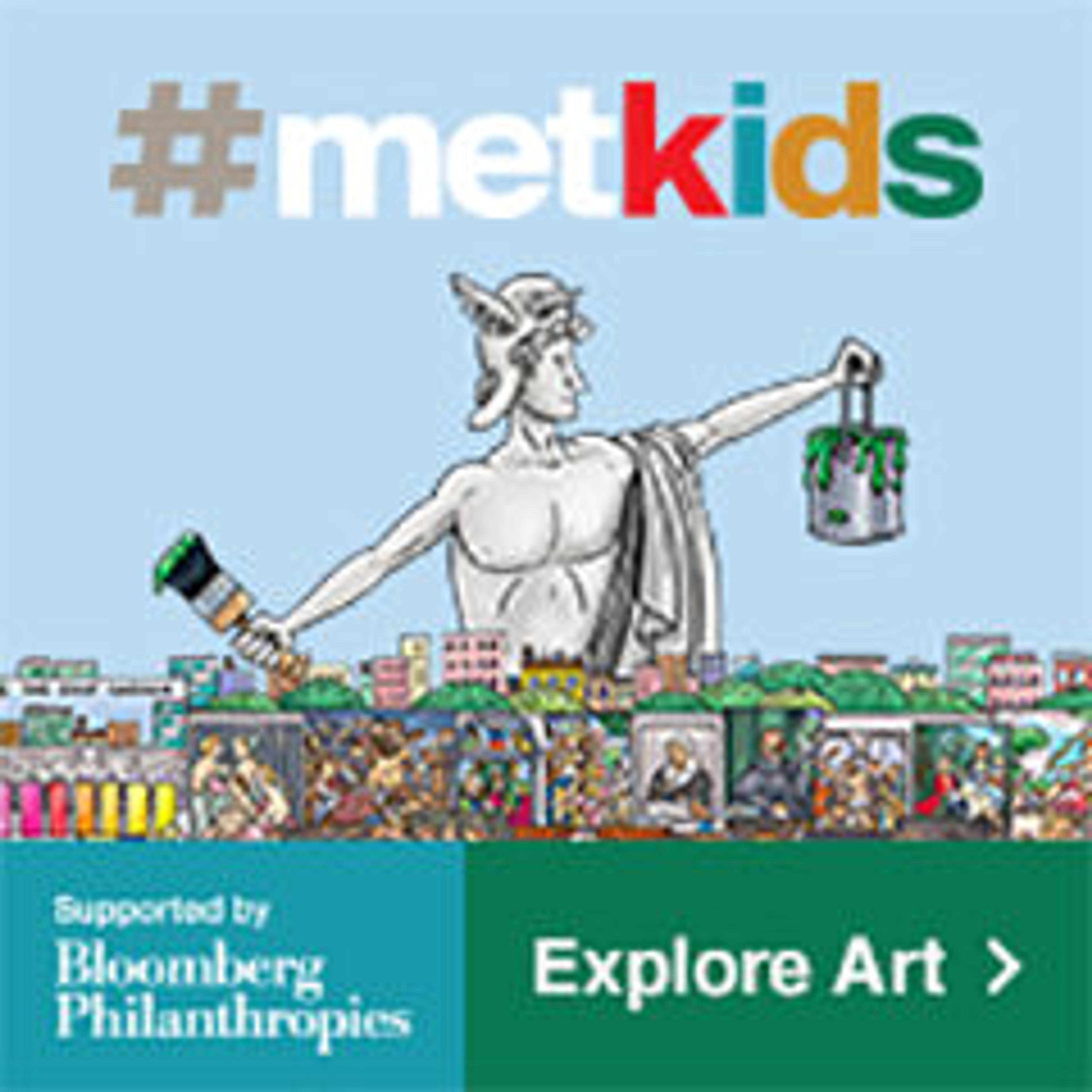
Visit #MetKids, a digital feature made for, with, and by kids! Discover fun facts about works of art, hop in our time machine, watch behind-the-scenes videos, and get ideas for your own creative projects.
